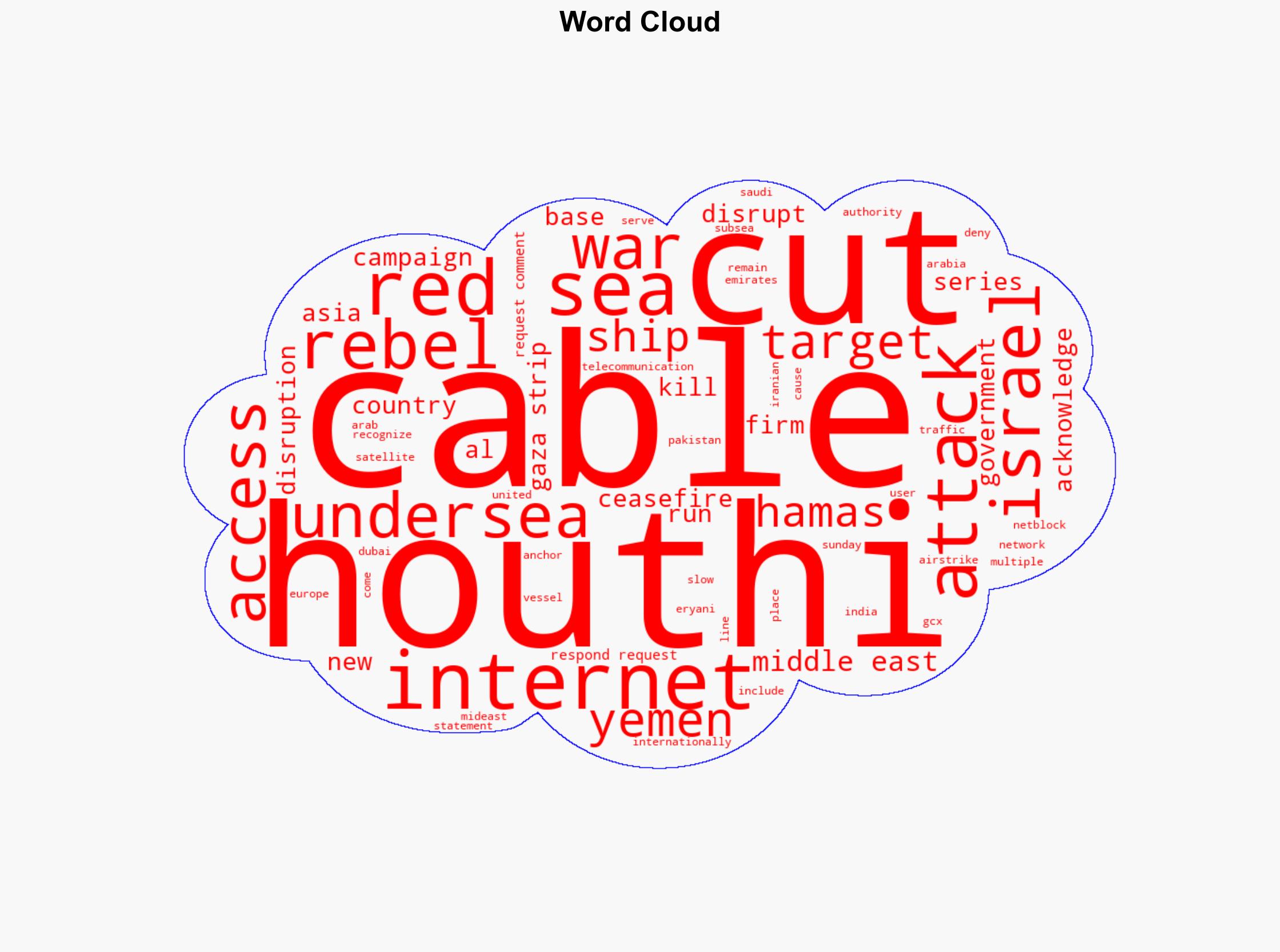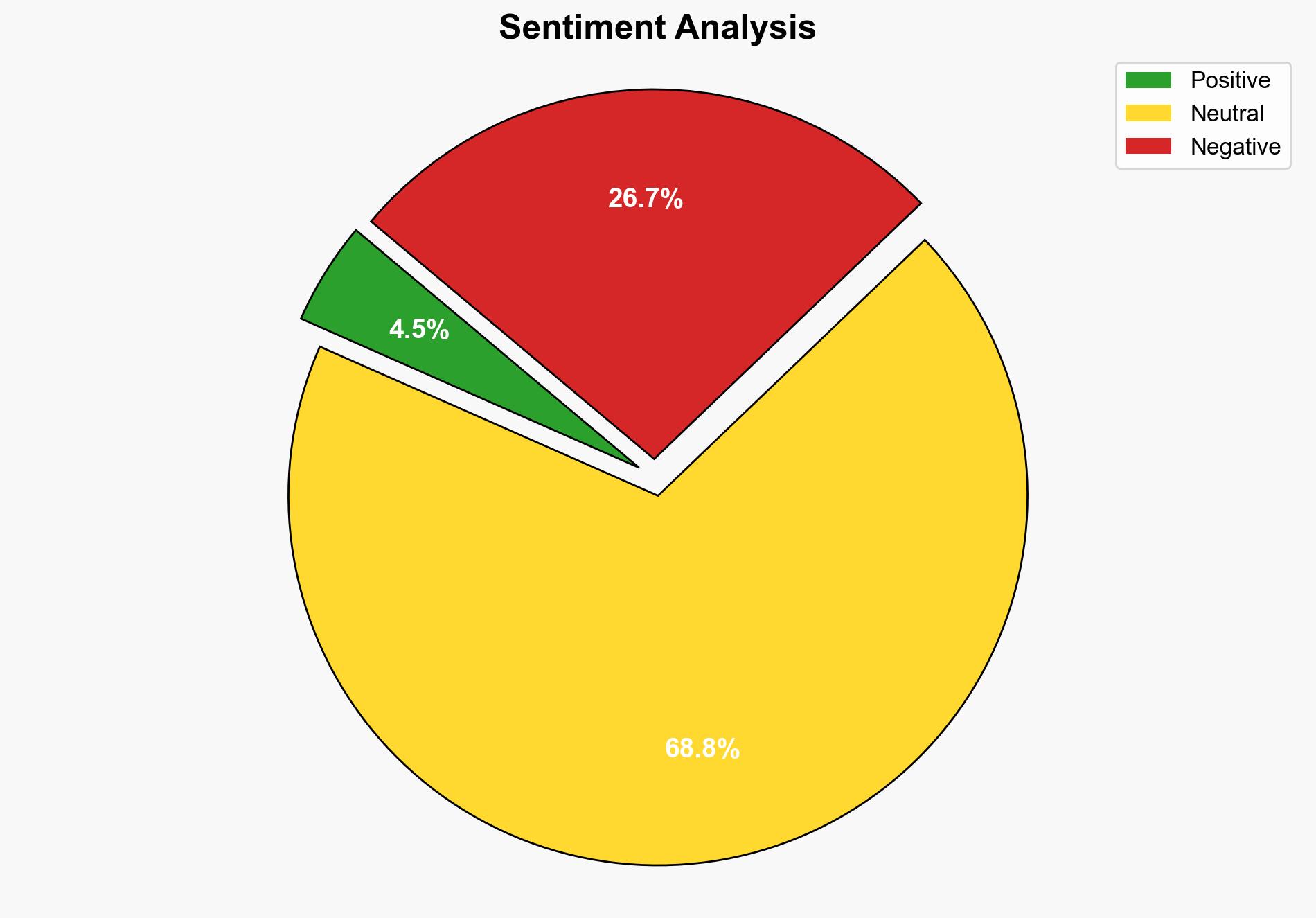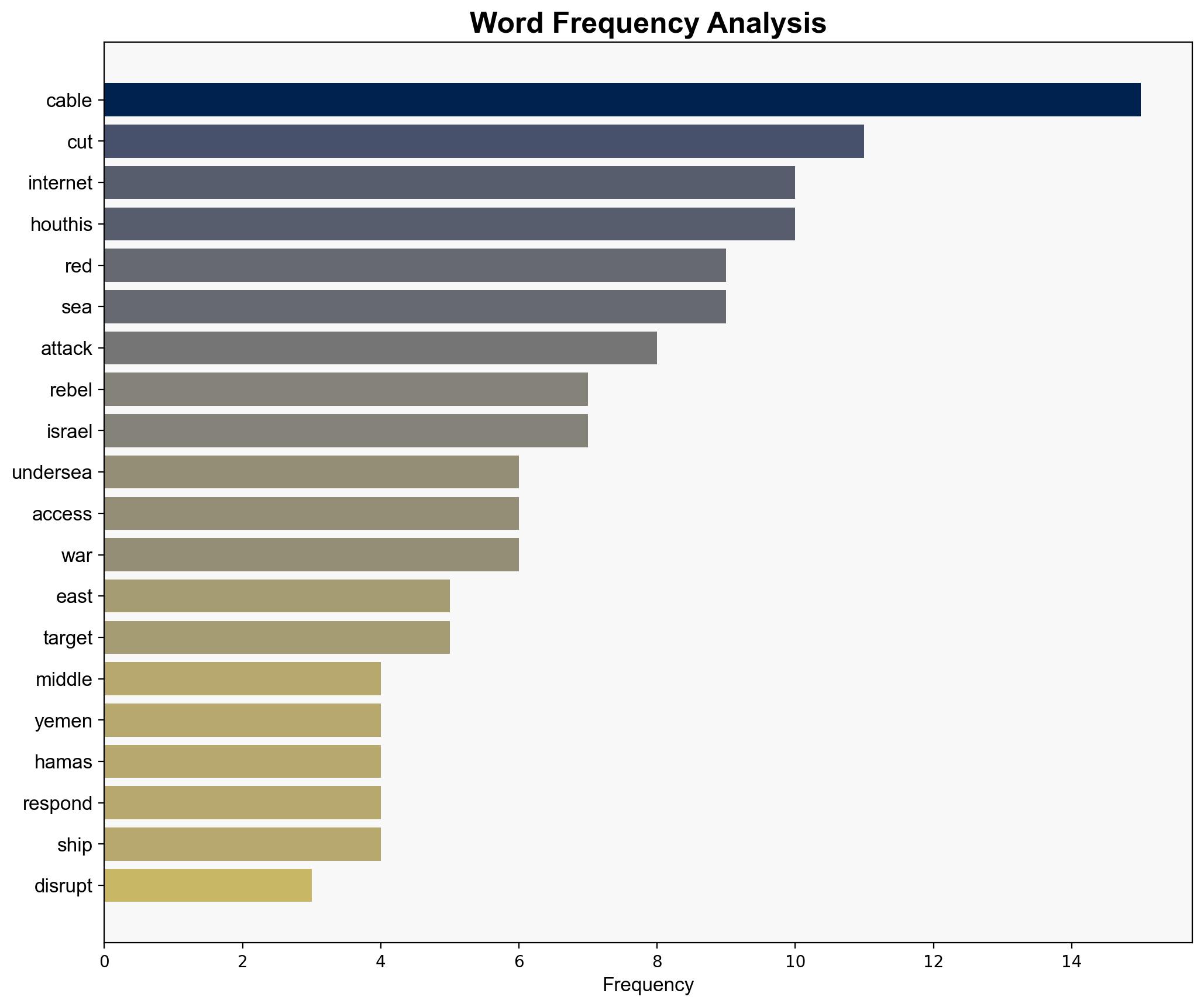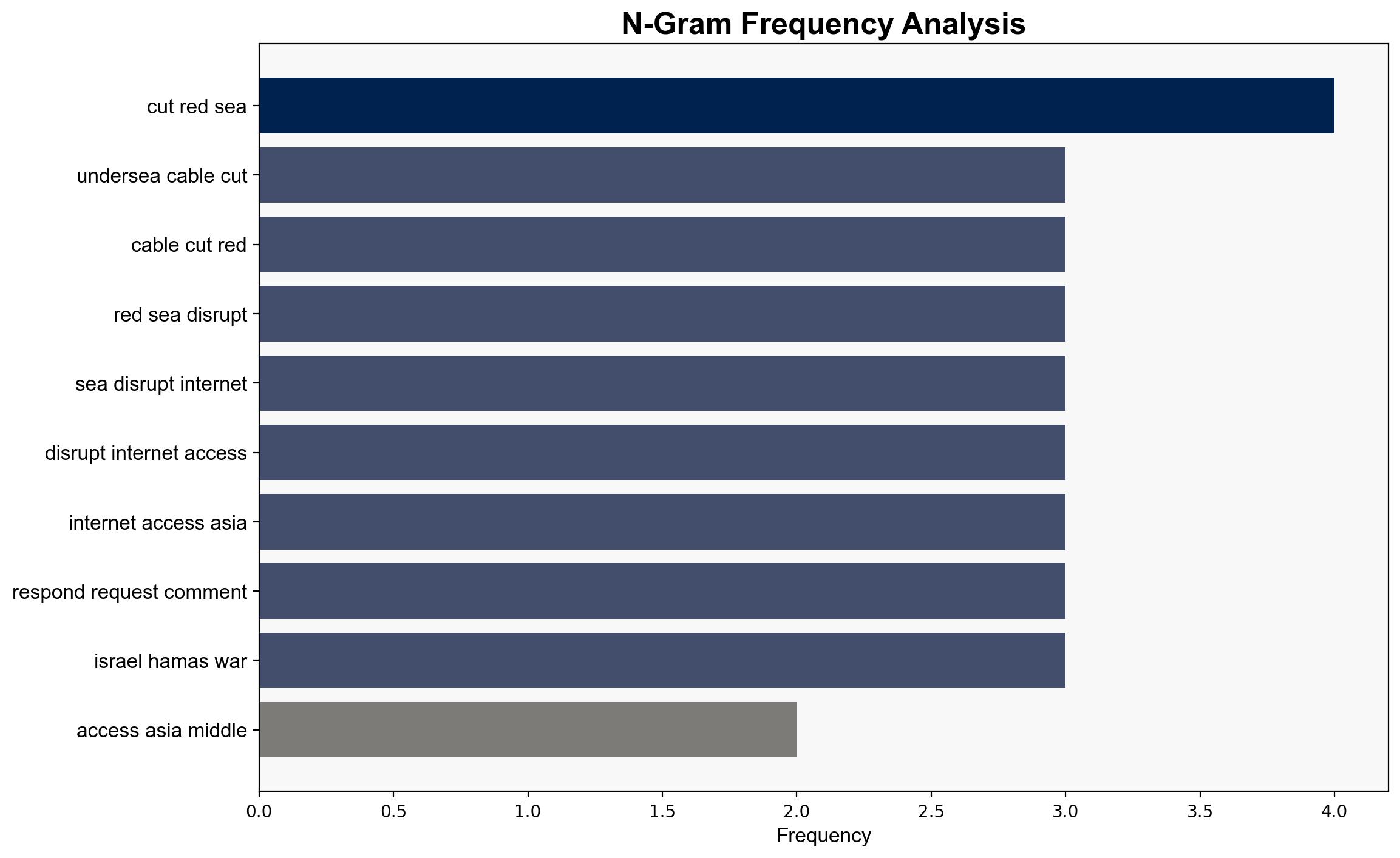Undersea cables cut in the Red Sea disrupting internet access in Asia Mideast – ABC News
Published on: 2025-09-08
Intelligence Report: Undersea cables cut in the Red Sea disrupting internet access in Asia Mideast – ABC News
1. BLUF (Bottom Line Up Front)
The most supported hypothesis is that the undersea cable cuts in the Red Sea were a result of deliberate sabotage, potentially linked to geopolitical tensions involving the Houthis and their regional adversaries. Confidence level: Moderate. Recommended action includes enhancing maritime security measures and diplomatic engagement to address regional conflicts that may escalate into further infrastructure attacks.
2. Competing Hypotheses
1. **Deliberate Sabotage Hypothesis**: The cable cuts were intentional acts of sabotage, possibly by the Houthis or another actor, aiming to disrupt communications and exert pressure on regional adversaries, particularly in the context of the ongoing Israel-Hamas conflict.
2. **Accidental Damage Hypothesis**: The cable cuts were accidental, potentially caused by maritime activities such as anchor dragging by ships, with no direct link to any hostile intent or geopolitical strategy.
Using ACH 2.0, the deliberate sabotage hypothesis is better supported due to the timing of the incident coinciding with heightened regional tensions and previous patterns of Houthi attacks on infrastructure.
3. Key Assumptions and Red Flags
– **Assumptions**: The deliberate sabotage hypothesis assumes a strategic motive by the Houthis or another actor, while the accidental damage hypothesis assumes no hostile intent.
– **Red Flags**: The denial by the Houthis and lack of concrete evidence linking them directly to the incident raises questions about the attribution of responsibility.
– **Blind Spots**: Limited information on maritime activities in the vicinity at the time of the incident could obscure understanding of potential accidental causes.
4. Implications and Strategic Risks
– **Geopolitical Risks**: Escalation of regional conflicts could lead to further infrastructure attacks, impacting global internet connectivity and economic stability.
– **Cybersecurity Threats**: Increased vulnerability of undersea cables highlights the need for enhanced cybersecurity measures.
– **Psychological Impact**: Disruption of internet services can lead to public unrest and loss of confidence in government capabilities to protect critical infrastructure.
5. Recommendations and Outlook
- Enhance maritime surveillance and security protocols in the Red Sea to prevent future incidents.
- Engage in diplomatic efforts to de-escalate regional tensions, particularly involving the Houthis and their adversaries.
- Scenario Projections:
- Best Case: Successful diplomatic interventions lead to a ceasefire and reduced infrastructure attacks.
- Worst Case: Continued sabotage leads to widespread internet disruptions and heightened regional conflict.
- Most Likely: Sporadic incidents continue, with incremental improvements in security measures.
6. Key Individuals and Entities
– Moammar Al Eryani: Publicly denounced the cable cuts as Houthi attacks.
– Alcatel Submarine Networks: Oversees the affected cable systems.
– Microsoft: Reported increased latency in the region.
7. Thematic Tags
national security threats, cybersecurity, counter-terrorism, regional focus




